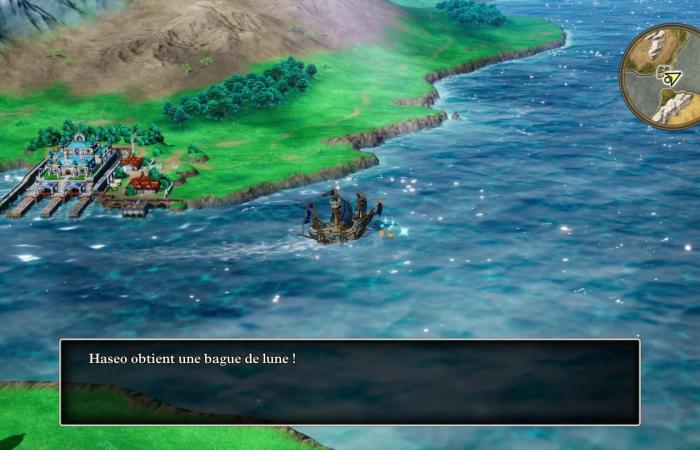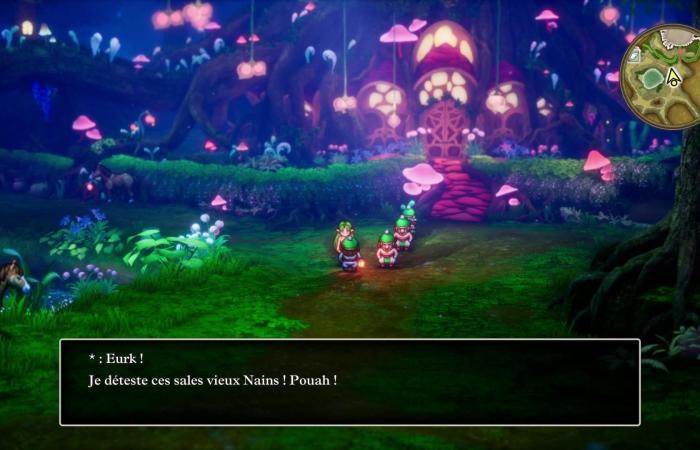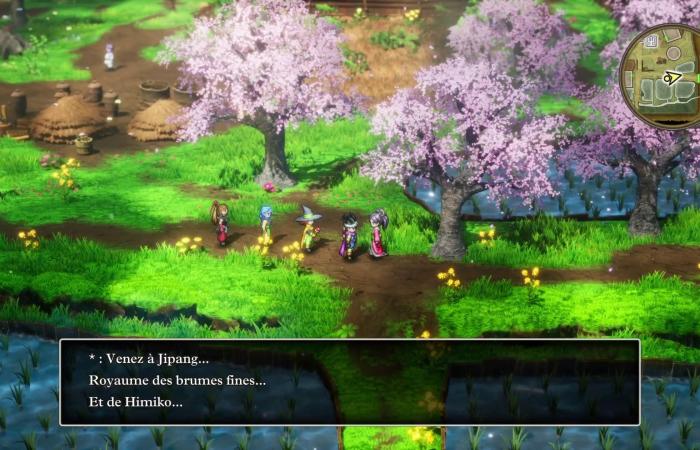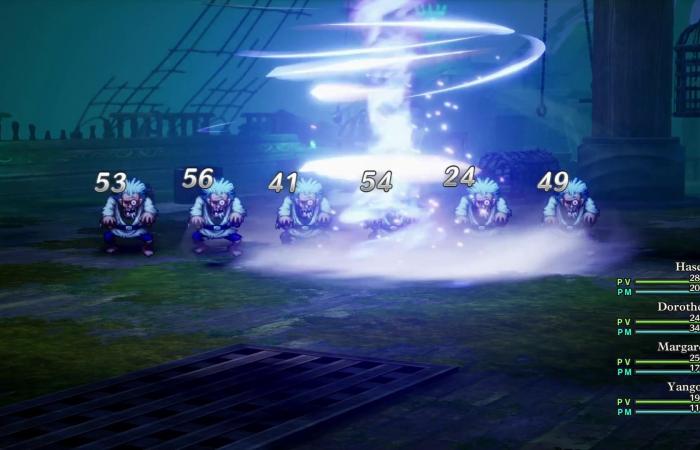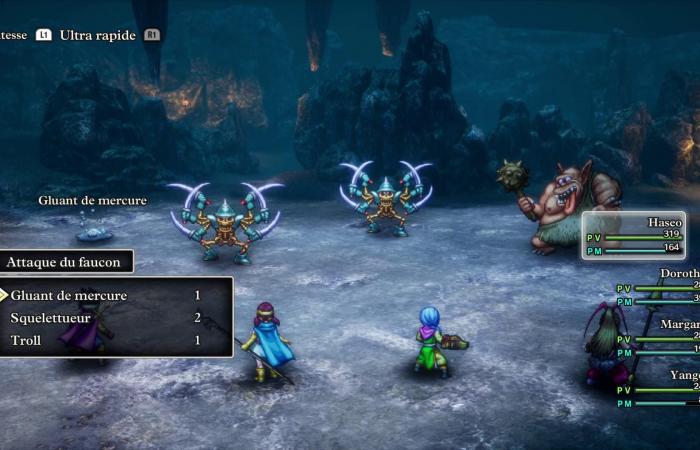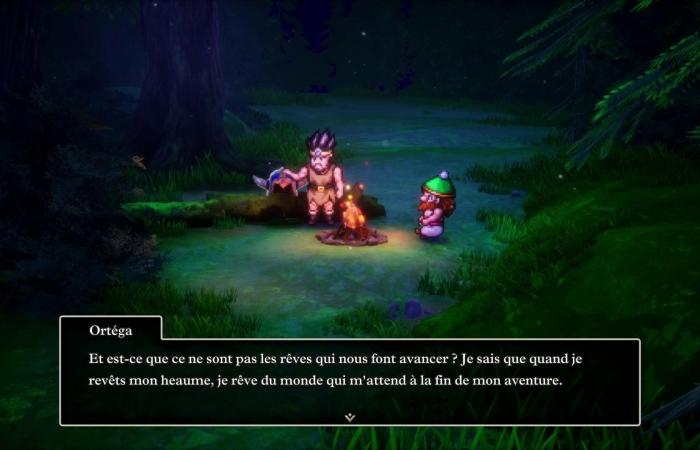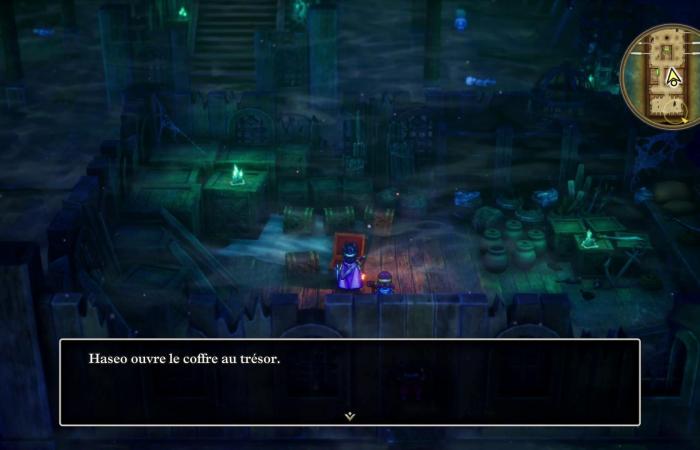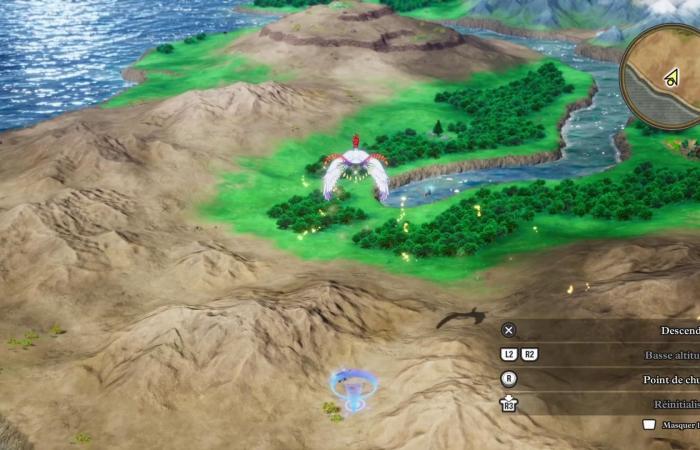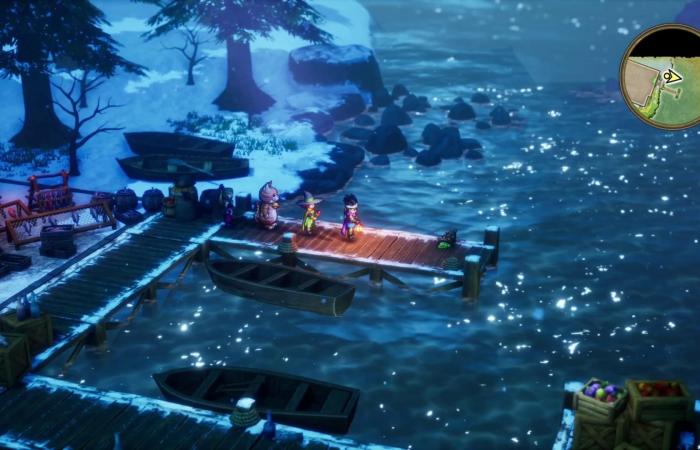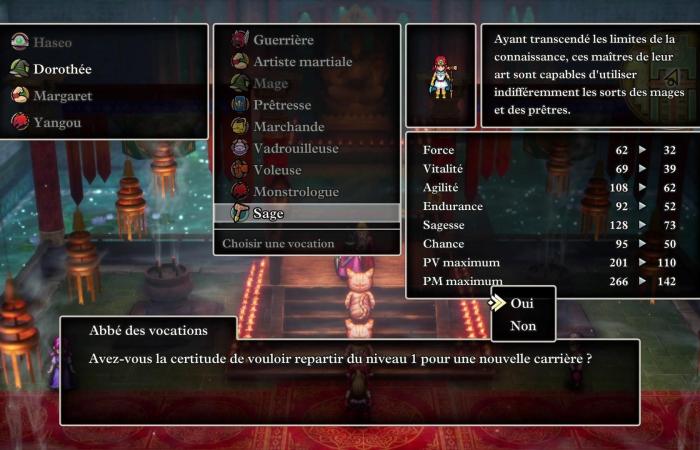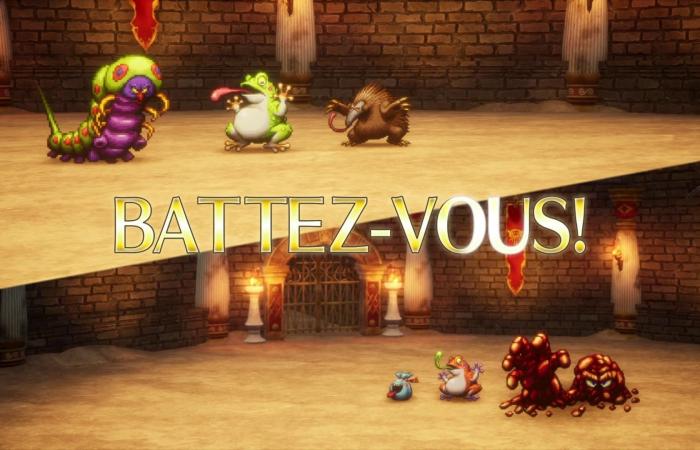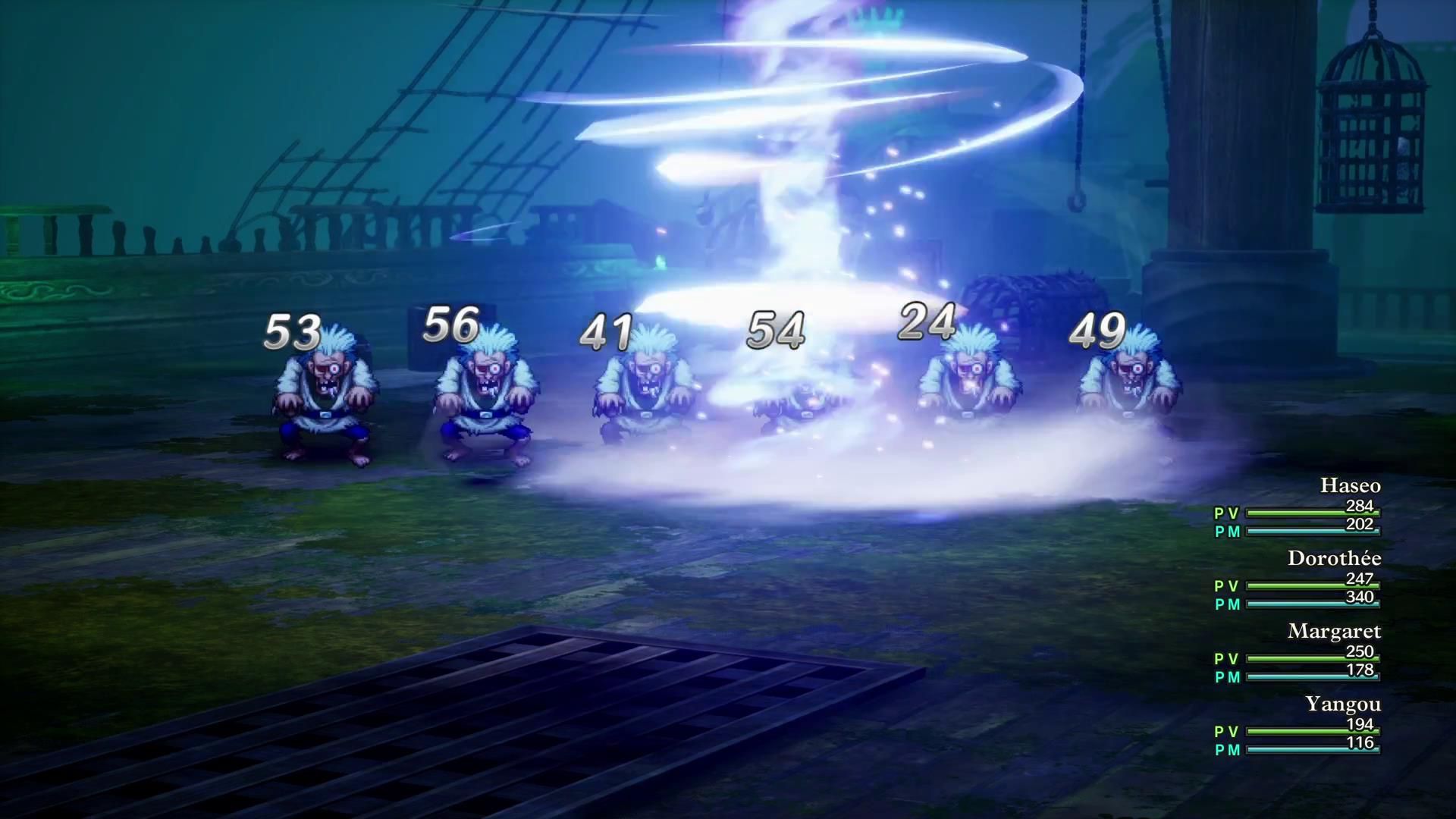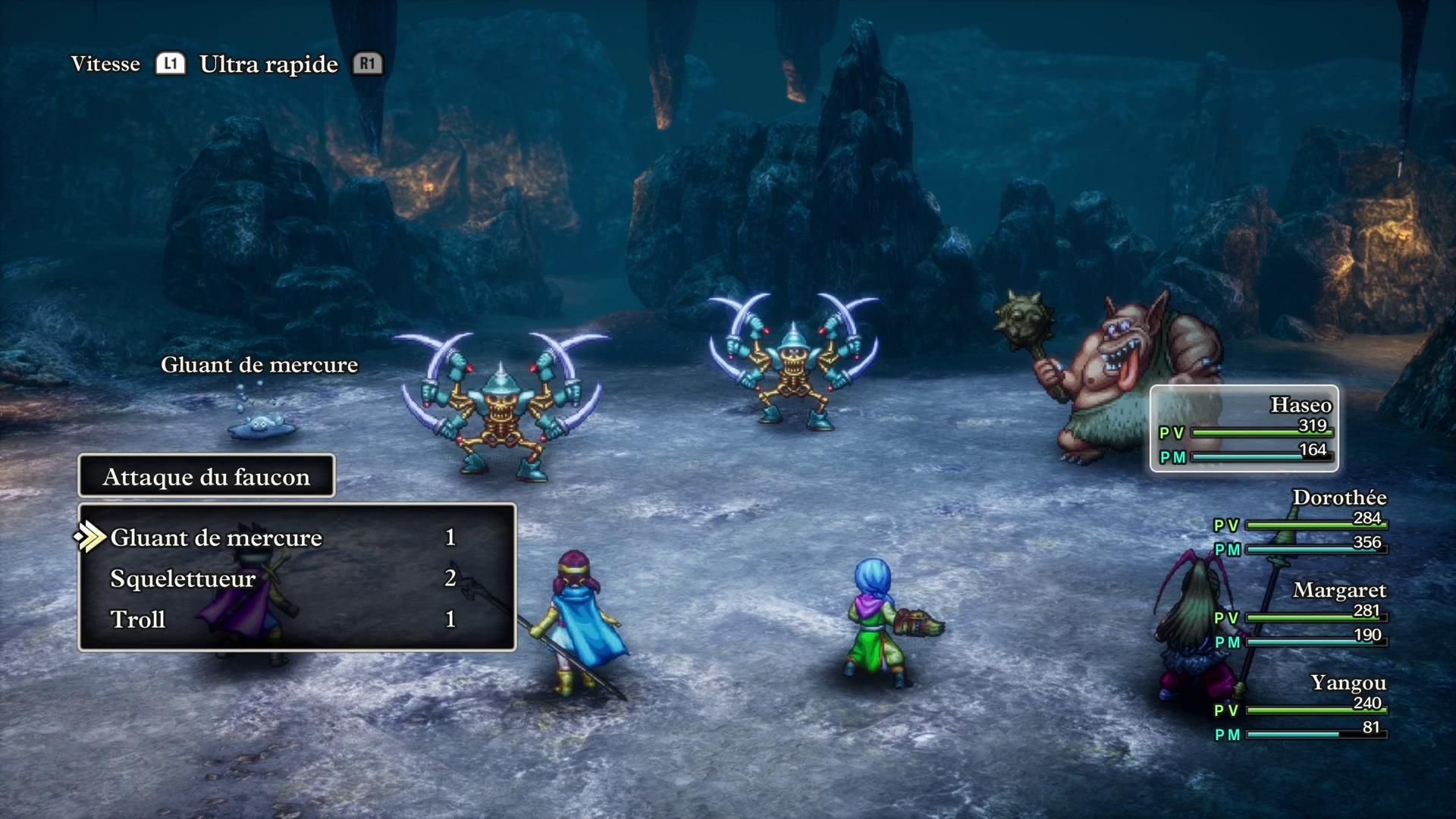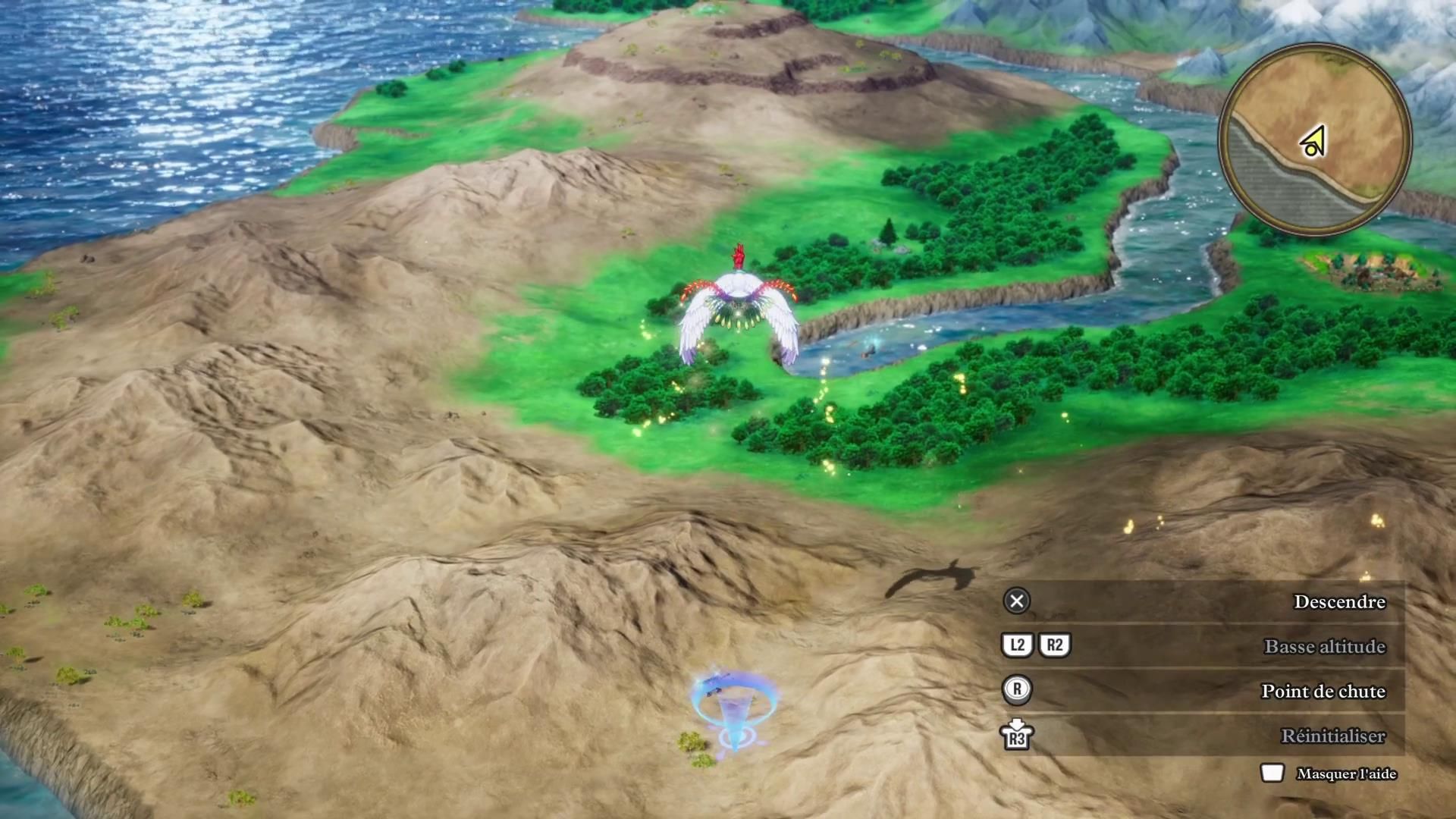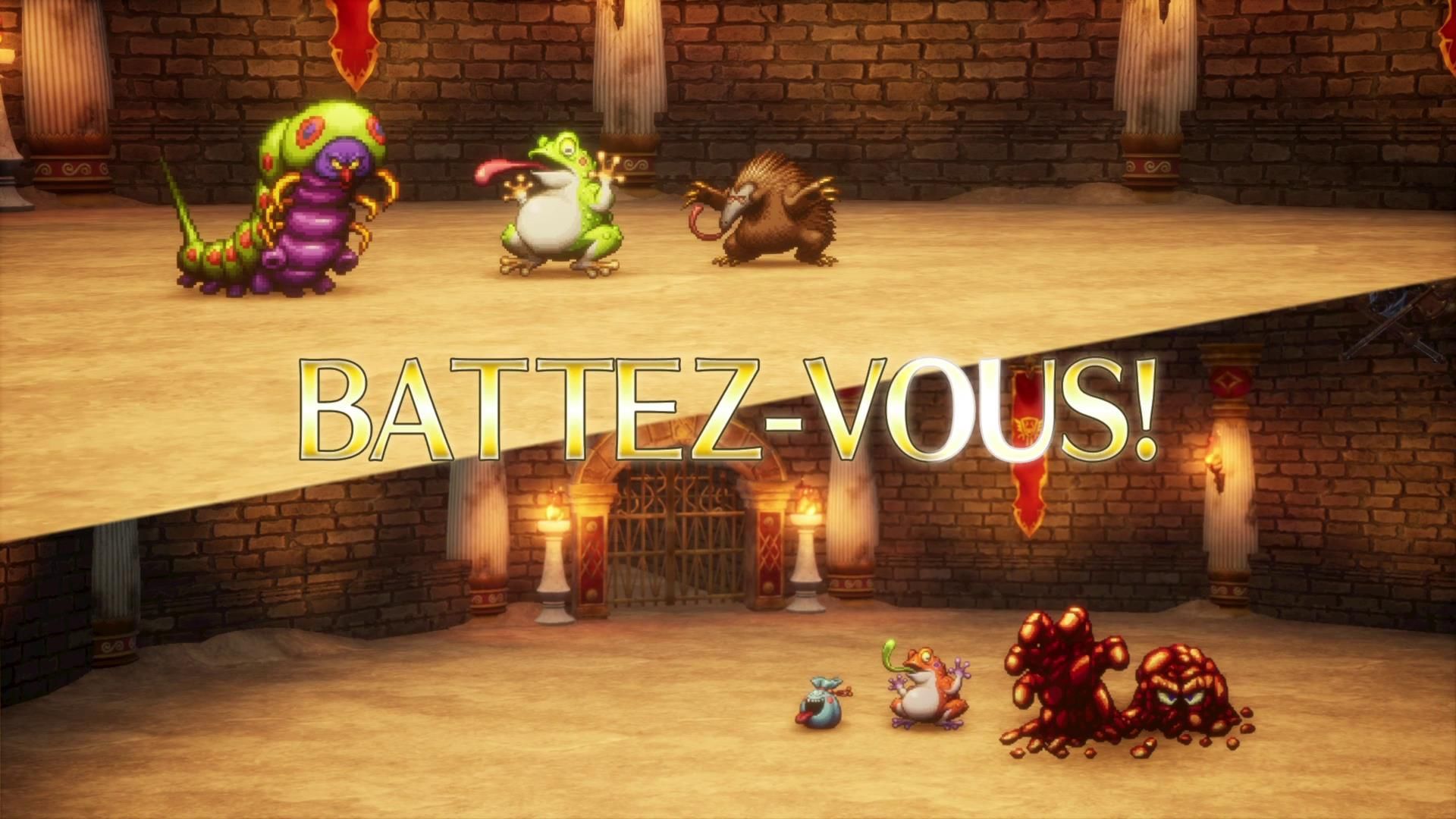Testing conditions: We completed the game on PS5 on normal difficulty with Japanese voice acting.
Dragon Quest Daima
Dragon Quest III HD-2D Remake proves that, despite the years, a cult game that has inspired the greatest remains timeless. Although this title is a legend in Japan, adapting it was no easy task. Designed in the 80s, Dragon Quest III was initially released on NES in 1988 before experiencing several adaptations on Super NES, Game Boy Color and mobile.
A gem of Japanese heroic fantasy role-playing in the purest tradition which is carried by a talented trio: Yuji Horii (game designer), Akira Toriyama (character and monster designer), and Koichi Sugiyama (composer). If the last two have unfortunately left us, their legacy continues to shine, in particular that of Akira Toriyama, who has experienced a real return to his roots in recent years with Sand Land et Dragon Ball Daima.
This remake particularly highlights Akira Toriyama's work on monster design, while also enhancing the game's many key characters. The high-resolution sprites benefit from improved textures, shadow and light effects, as well as only animations that make the fights more lively and dynamic.
This example perfectly reflects the entire title, which manages to be more immersive and expressive. The result is a nostalgic and enriched experience for fans who have already completed the game, while providing a more welcoming entry point for newcomers. Despite the weight of the years, every effort has been made to make new players feel comfortable, thanks to comfort additions respecting our times, but always within the limits of fidelity to the original work. For veterans who want to relive the adventure by focusing solely on the visual update, it is possible to play “old school” by ignoring the new features, but the initiative will come back to you.
Welcoming to newbies?
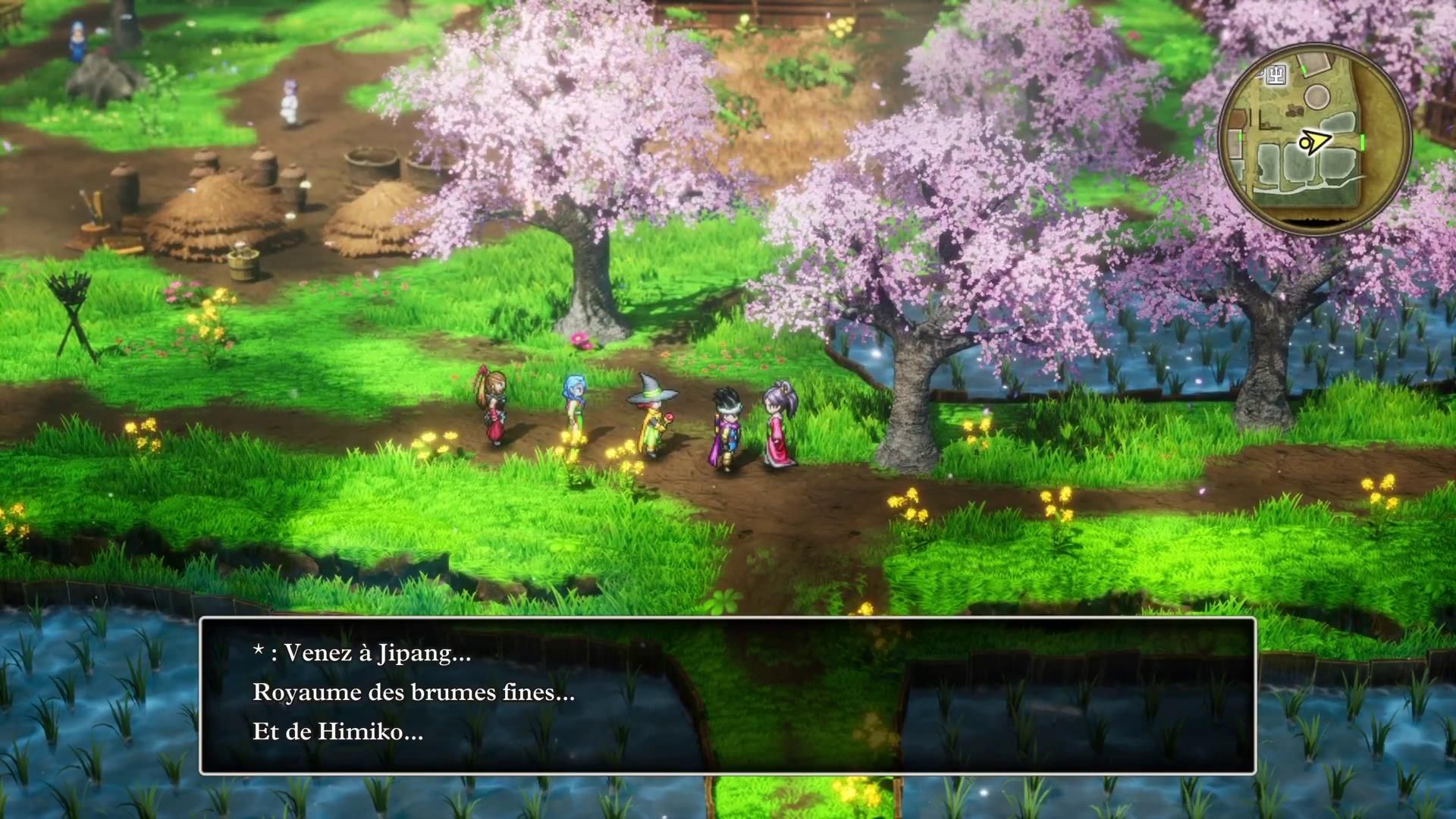
Because there are a lot of comfort elements that reduce the frustration often associated with games from this era so that new players can enjoy discovery without going too hard. This first involves choosing between three difficulty modes (modifiable at any time during the game):
- Quest for the Whelp: This corresponds to easy mode for those who mainly want to enjoy the story.
- Dragon Quest: the normal and recommended mode to have a balanced challenge (the mode we chose).
- Draconian Quest: A very difficult mode with more powerful enemies, less EXP and fewer gold coins.
Contrary to Dragon Quest XIwhere monsters are visible in the environments, Dragon Quest III HD-2D Remake retains a traditional system of random battles. These clashes are relatively frequent, and it is not uncommon to experience an unexpected Game Over. Usually, a defeat results in losing half of our gold when reloading at the last church where we confessed. However, thanks to an automatic save activated after each fight or change of scenery, no progress or money is lost.
We are given the choice between this automatic save or an old-fashioned loading for those who want an authentic experience. However, this added comfort particularly impacts the management of gold and equipment, which are the main “collateral damage”. Without loss of gold, the bank loses its usefulness, but the loss of value and stakes is reinforced by the many shiny points of interest on the world map, which provide a large quantity of items and equipment . This abundance somewhat alters the notion of prudent management, where each equipment decision had to be carefully considered.
Another valuable addition missing from the original game: an objective marker which indicates the direction to follow to progress in the story. This marker can be disabled, and although it offers a considerable time saving, we advise you not to depend on it from the start. All the magic of Dragon Quest III HD-2D Remake lies in its open exploration, with the search for clues and objects necessary for your progress. Unlike many modern JRPGs, each NPC offers valuable information about secret areas or directions to continue your quest.
An epic and almost perfect quest
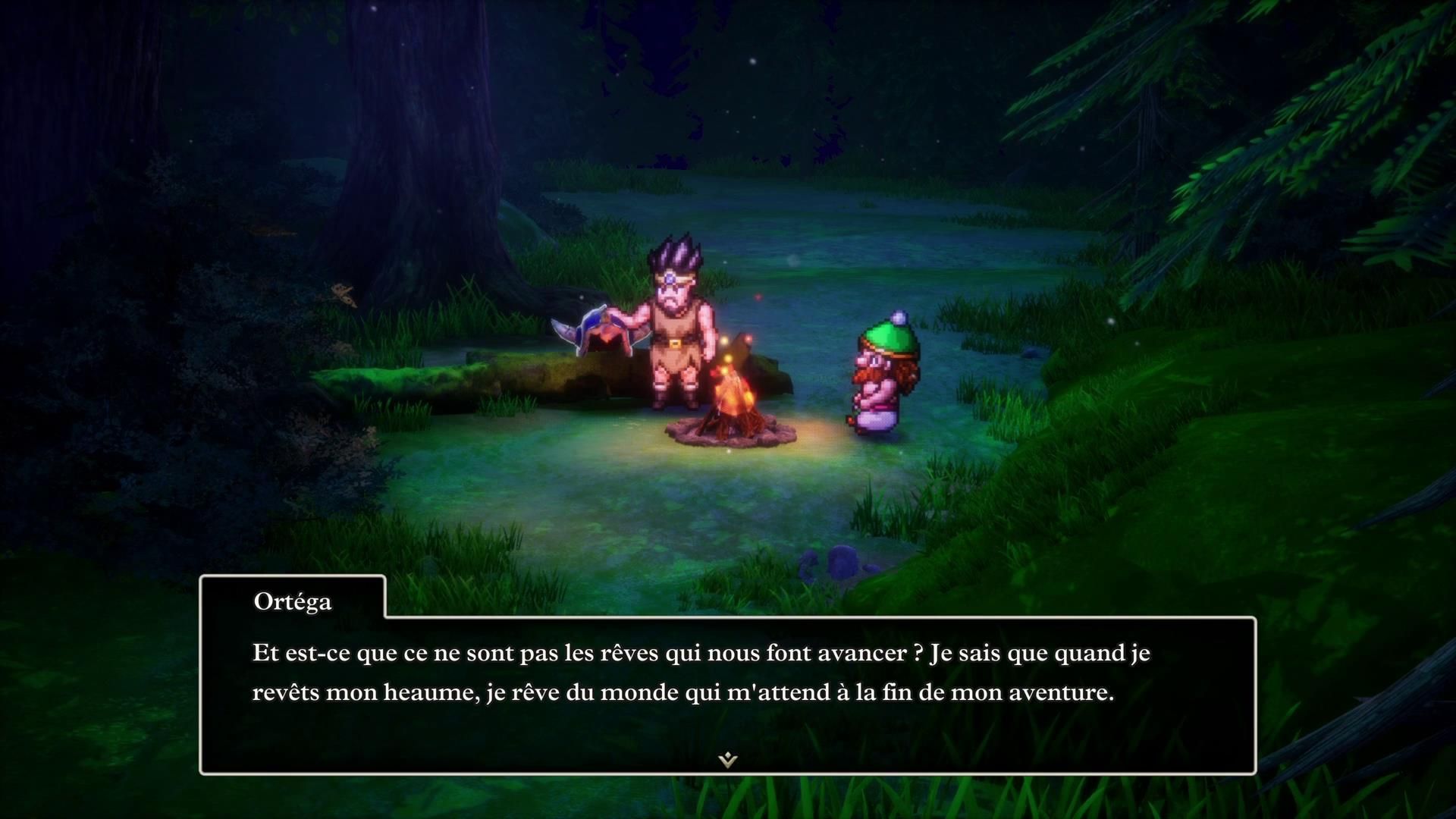
Another feature encourages this approach: memories. After each dialogue with an NPC or the reading of any message, it is possible to record these exchanges with a simple key press to consult them at any time from the menu. A great way to store key information to use when the time comes.
The HD-2D redesign makes perfect sense in a game that highlights exploration and the epic quest of a group of adventurers. The cities and continents of this opus are inspired by real places: Romalie, for example, evokes Rome, while Ibis recalls ancient Egypt. Thanks to this technology, each city visited offers a total change of scenery. There is no point in dwelling further on the obvious: visually, the game is sublime, and we remain captivated throughout the adventure.
Today, it is rare to see an RPG where the playable characters are not directly involved in the dialogues and where the hero remains silent in all circumstances, especially since the story of Dragon Quest III HD-2D Remake remains quite simple and linear. However, the strength of the game lies in its accessible approach, embellished with numerous moments of humor and lightness (perfectly in line with Toriyama's graphic style), while knowing how to be dramatic when necessary. One of the most successful contributions of this remake is the in-depth development of the character of Ortega, the father of our hero.
Ortega left his wife and child to face the fearsome Archdemon Baramos. Unfortunately, he fails in his mission, leaving Baramos free to threaten the world. Sixteen years later, we play as his son (or daughter), who takes up the quest to accomplish what his father could not complete. Ortega's reputation is omnipresent in the game universe, and these storyline additions allow you to become more attached to this character. The dubbing, in Japanese or English, gives even more depth to key scenes, although purists may prefer the silent experience, faithful to the original.
A true vocation

The Japanese voices are particularly appreciable in combat, adding an additional layer of dynamism to the graphical improvements already mentioned. The clashes, based on a classic turn-based system, are still enjoyable and take full advantage of the strengths of each class. The creation of companions, the possibility of changing classes to optimize the characters, as well as the personality system provide interesting strategic depth. By changing class, characters start again at level 1 but retain certain acquired skills and half of their base statistics, offering increased progression potential. As for personalities, they influence the growth of statistics according to character traits, allowing character development to be adapted to different play styles.
However, the game maintains a fairly slow pace due to often long dungeons, accentuating the sometimes repetitive random encounters, and the difficulty peaks posed by certain bosses. The first part is, so to speak, quite standard in that we avoid taking too many risks to avoid hours of grinding. Which results in a motley team with at least one healer and one mage. Fortunately, the title is full of tutorials and a “traveler's tips” section which is a gold mine of information to better understand the mechanics.
Tactics, which let the AI handle groups of monsters that don't require special attention, as well as adjusting combat speed, mitigate these flaws. The addition of new content also works in favor of the remake. Dragon Quest III HD-2D Remake benefits from the experience of Team Asano, acquired in particular with Octopath Traveler 2by joining the Monstrologer class. This class, fun to play, fits harmoniously into a team. Like Ochette in Octopath Travelerthe power of certain attacks and the acquisition of unique skills depend on the peaceful monsters you recruit while exploring towns, dungeons and secret areas. These monsters can also be used in arenas for duels. Dragon Quest Monstersalthough their actions are not directly controllable. It is only possible to define directions, such as favoring care or unrestrained attack.
With the orchestral versions performed by the Tokyo Metropolitan Symphony Orchestra, Koichi Sugiyama's soundtrack transports us with its cult melodies. However, one aspect that has aged poorly is the repetition of themes, due to the technical limitations of the time, which restricted the number of tracks available. Other elements inspired by Octopath Traveler 2 fit perfectly into the atmosphere of the game, such as the day/night cycle. This directly influences exploration but above all it offers variations for music. Regarding the lifespan, everything will depend on your level of completion and the difficulty chosen. In normal mode, allow between forty and fifty hours to complete the game, including some grinding phases.


